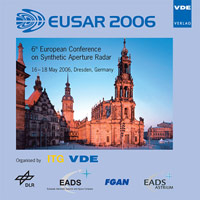Performance of JPEG-Turbo System (J-Ts) for Transmitting SAR Images Disturbed by AWGN Environment
Conference: EUSAR 2006 - 6th European Conference on Synthetic Aperture Radar
05/16/2006 - 05/18/2006 at Dresden, Germany
Proceedings: EUSAR 2006
Pages: 4Language: englishTyp: PDF
Personal VDE Members are entitled to a 10% discount on this title
Authors:
Kent, Sedef (Istanbul Tech. University, Electronics and Communication Engineering, Maslak, Istanbul, Turkey)
Kargin, Serdar; Buyukatak, Kenan (Turkish Air Force Academy, Yesilkoy, Istanbul, Turkey)
Abstract:
Making SAR (Synthetic Aperture Radar) image files smaller before transmission is very important for speeding up, bandwidth requirements and storing needs. In this paper, we propose JPEG (Joint Photographic Experts Group) scheme for compression and Turbo codes for error correction and hence transmission 2-D satellite images with minimum Bit Error Rates in less transmission time (named as JPEG-Turbo system). JPEG can provide huge compressions making a big difference for transmission times. A useful property of JPEG is that the degree of lossiness can be varied by adjusting compression parameters. This means that the image maker can trade off file size against output image quality. While transmission in noisy channels, the bit streams of the image are easily corrupted and reconstructed image qualities are unacceptable in most cases. In fact, detailed analysis of the simulations shows that a single bit of error may destroy the whole bit stream due to error propagation. Thus, Turbo coding protection is considered here for the robust image communication. Hence the advantages of the superior performance of Turbo codes with compression algorithms are combined resulting to get a better bit error performance with minimum transmission time.


